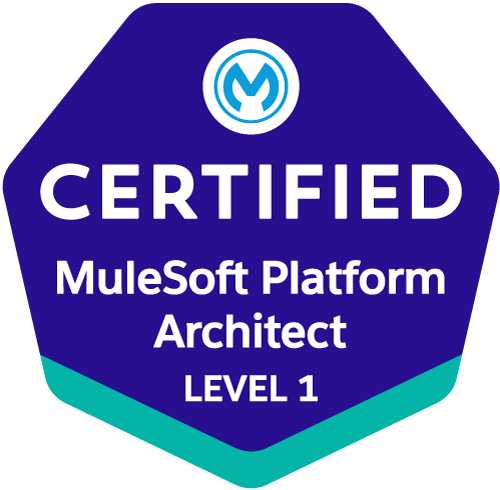MuleSoft Certified Platform Architect - Level 1 MAINTENANCE
45 minutes
Virtual

Summary
Note: The MuleSoft certification program will be moved over to the Salesforce Certification program, available through Webassessor starting May 6, 2024. For additional information, please visit our FAQ.
Effective February 14, 2024, Maintenance exams are no longer available. If you have a certification that is active as of January 1, 2024 then your certification will remain active through 2024. You do not need to complete a maintenance exam to maintain your certification status. More information about maintenance will be shared in 2025.
ノート:日本語版に関してはこちらから内容をご確認ください。